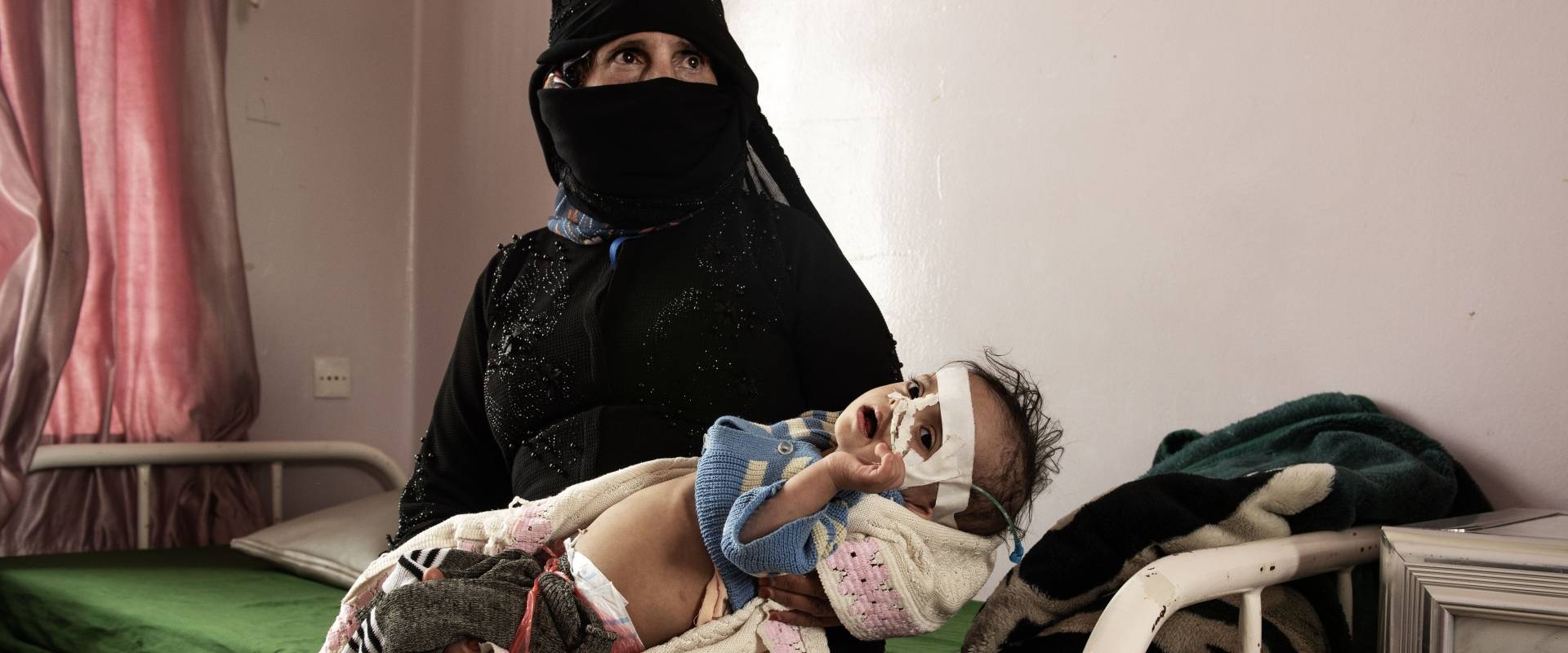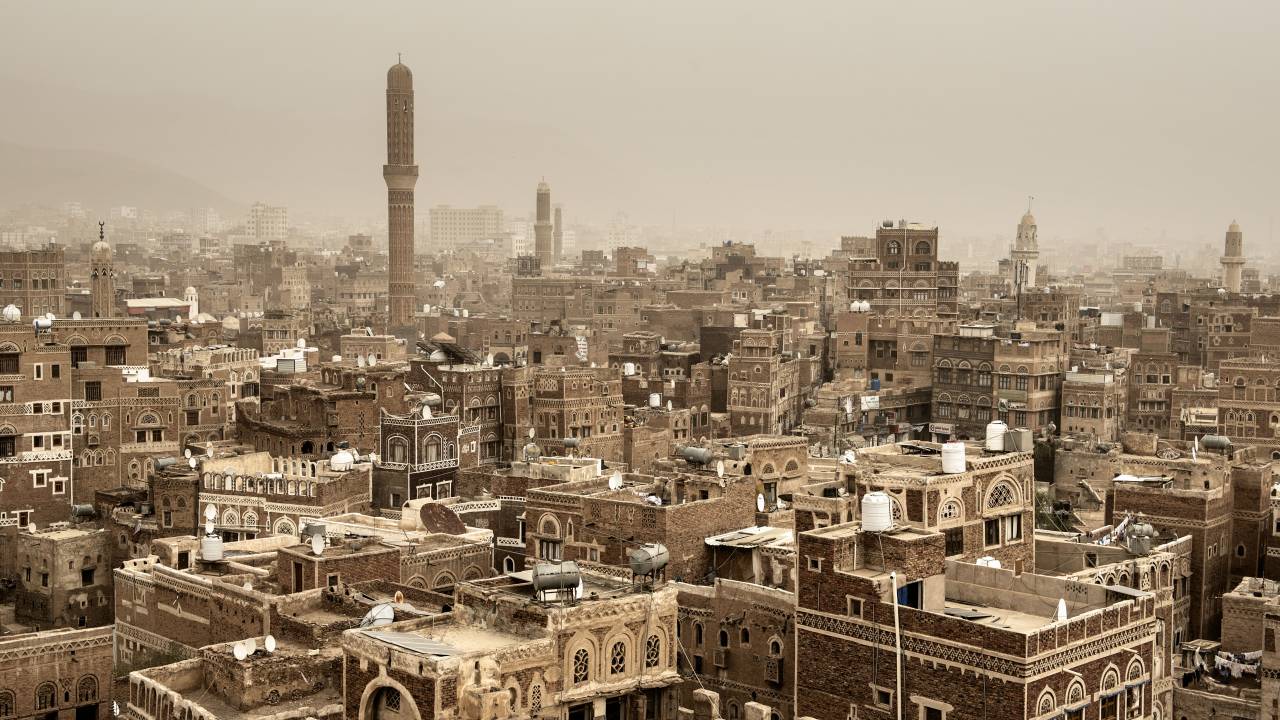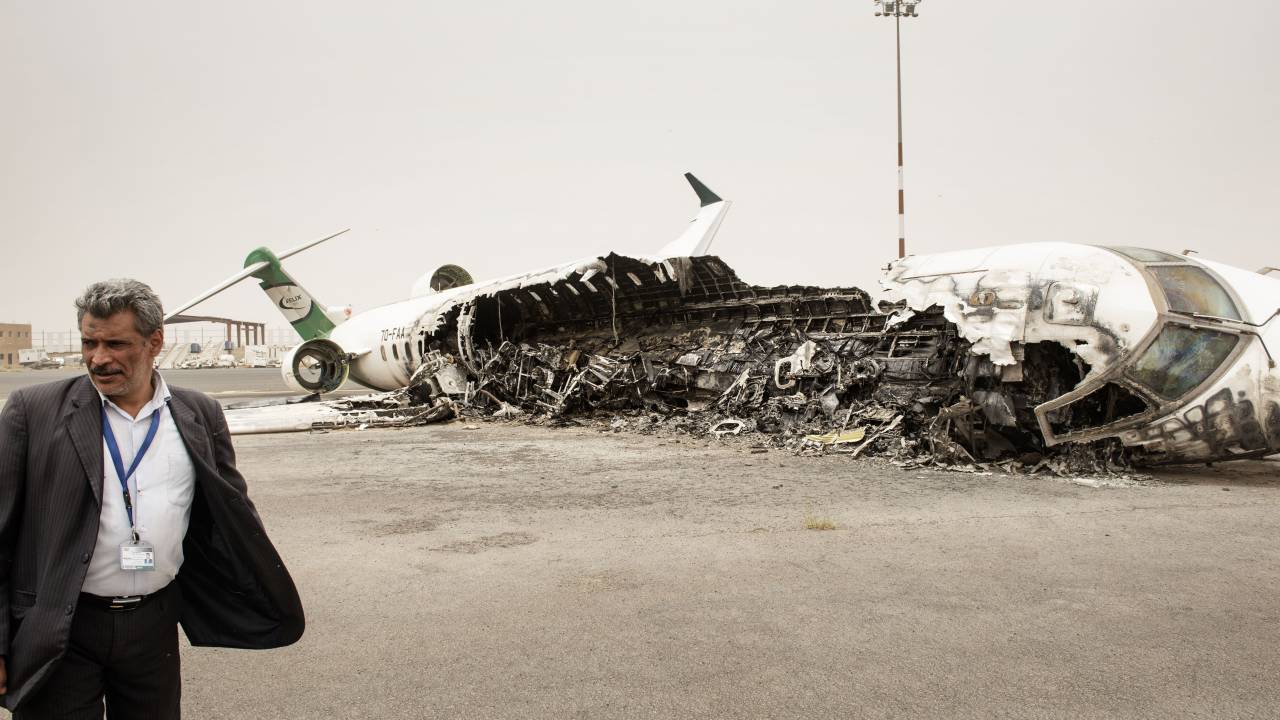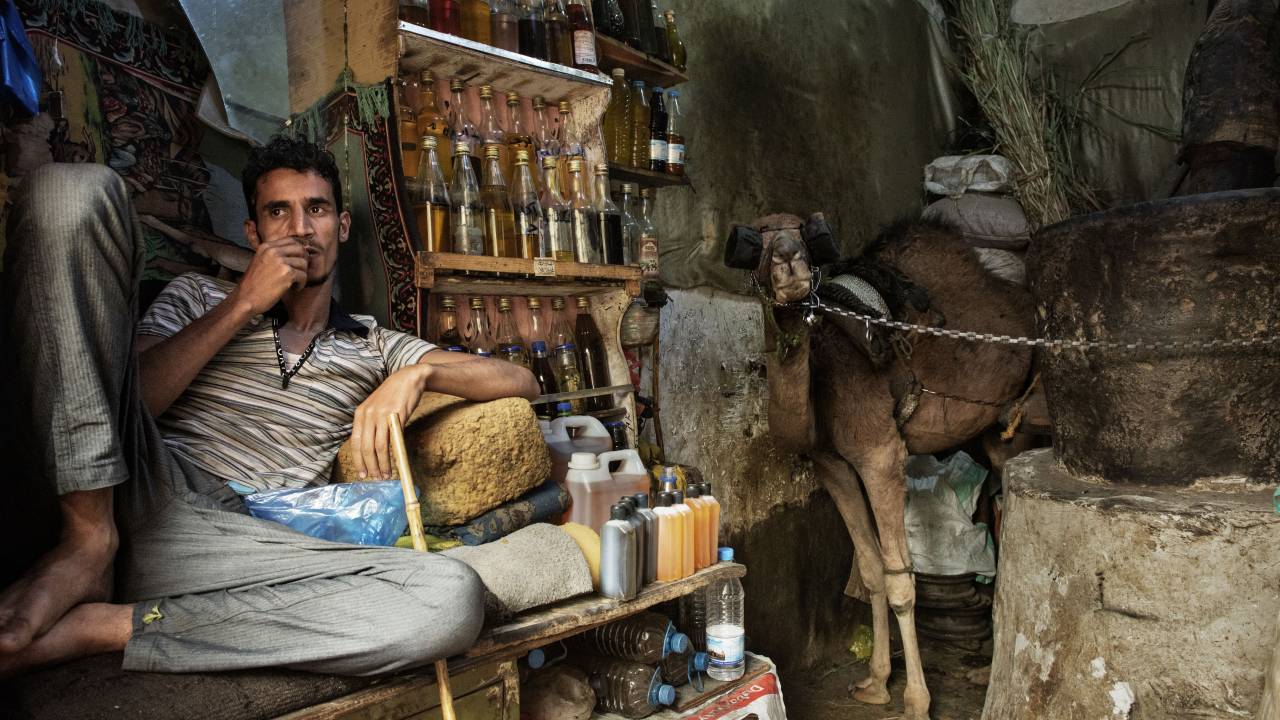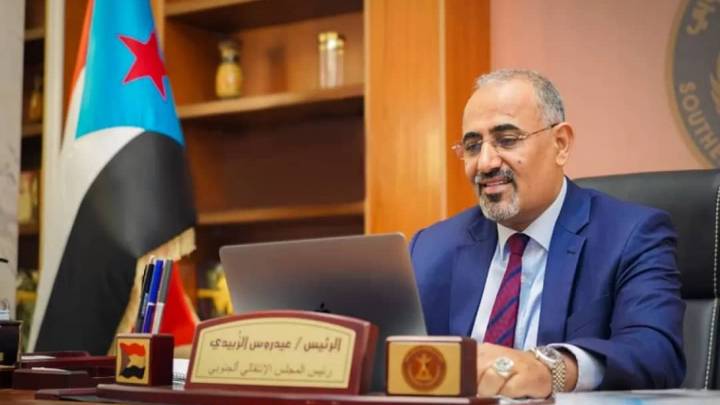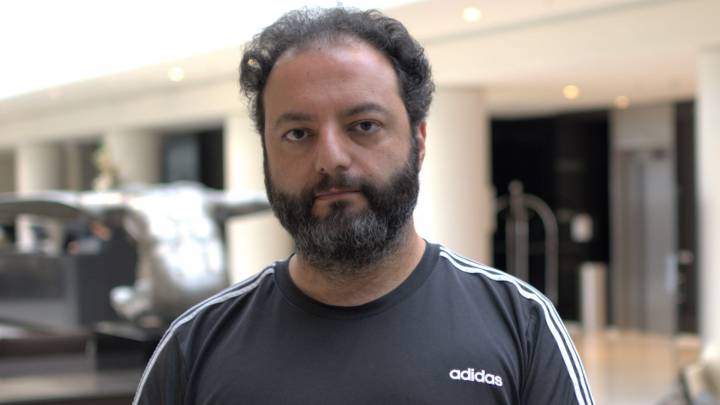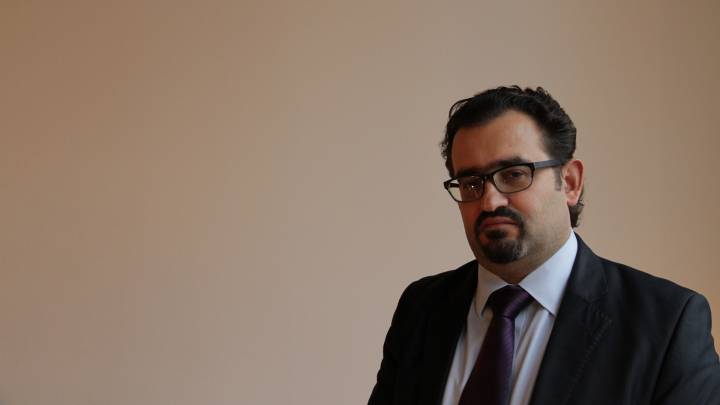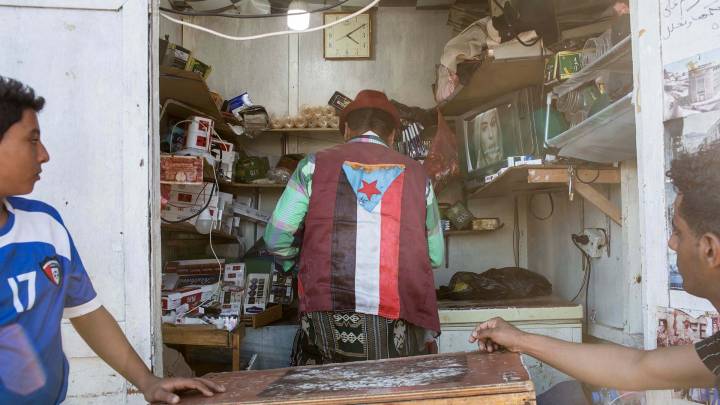The Saudi-led coalition and the Iran-backed Houthis fight a war of attrition. The strategy of economic warfare doesn’t change the military equation, but has devastating effect on civilians. A visit to a country scarred by famine, disease and neglect
Ibrahim Al-Abid is 14 years old, he wears a sand-coloured caftan as he walks on the debris of a building in the old city of Sana'a. “The house was shaking, it was evening. Our cousins and uncles had gathered to dine in the courtyard and were waiting for Ahmed to return from the bread shop. When he came back, the dog didn’t want to let him in. Then Ahmed became impatient, he grabbed a stone from the ground and threw it to scare the dog away. But the dog’s behaviour was a warning, a prophecy. Ahmed entered and a few minutes later the building with ten of our relatives inside was hit by a missile. They all died.”
Ibrahim Al-Abid’s home is in front of the bombed building, where from his room he didn’t hear anything – he says – “because in war, you learn as a child that when you hear the strike it’s already too late.” He felt the walls trembling, then he rushed out to extract the dead from the rubble while trying to save the survivors.
He moves his hands nervously to mimic the oscillation of the building. He looks up at the sky, describing the sound of drones, and his fear. “We are used to it now,” his cousins, Mohammed and Kamal, 12 and 11 years old, say. They don’t attend school, but they want to become fighter jet pilots, “to protect the country.”
The prophetic dog survived and still prevents access between the ruins on the ground floor which were a bathroom and a kitchen before the airstrike. Ibrahim’s cousin could have survived, if only the ambulance that had arrived that night had oxygen. But it didn’t.
Among the Houthi checkpoints and the ubiquitous signs of the propaganda they impose, the entrance to the souq of the old city shows the charm of the ancient trading center, incense and spices, colours and mud houses. It is the first sign of the contradictions that characterise the long and unresolved Yemeni crisis.
The markets are full of fruits, vegetables, and khat – the traditional drug of the country, compulsively chewed by everyone, adults, and teens, which provokes excitement and euphoria. The store shelves are full of bread and flour. Pharmacies are provided with medicine. Yet everything is lacking for many households, while the hospital wards are full of malnourished children.
These are the effects of economic wars. And economic wars have indirect victims for whom few are willing to take responsibility.
The entrance to the Al-Sabaeen hospital in Sana'a is crowded from early morning on. Mothers, new-borns, and the elderly proceed to the counters and from there are ordered to the wards. Every medical facility still working in the country now has a section dedicated to malnutrition and another for cholera patients.
Dr. Abdullah Aji disinfects his hands and his shoes, puts on his mask and enters the triage tent. “Yesterday alone we received seventy children. The same symptoms for all: diarrhea, vomiting, and dehydration. They are children who are born in extreme poverty, their mothers are malnourished, we move them from one department to another. We treat cholera, then malnutrition. Then we send them home, or to the refugee camps from which they arrive again, and everything starts from the beginning: it’s a vicious circle. They have no food, there is no drinking water. The lucky ones return, the others die. And the majority of those who die remain outside the statistics because they die in remote villages.”
Dr. Aji knocks on every door of the ward, in every room there are two or three children. The same diagnosis for every child. “Asma is a year and a half, she should weigh ten kilos, she weighs just over four. Mohammad is ten months old, he should weigh eight kilos, he weighs two and a half.” Fatima, his mother, is twenty-nine and has seven other children. Though she does not cry, in her whispered monosyllabic responses, there is the resignation of those struggling every day to survive.
“We were already poor, now we are beggars. We have become a country of beggars”
Nor does she cry out at the sight of her son’s wrinkled skin, his visible ribs, or his bedsores. From the millimetric thickness of the black veil, only pain emerge from her eyes. Her weary voice says, “We were already poor, now we are beggars. We have become a country of beggars.” Her husband worked in Saudi Arabia as a driver. After the start of the war, he lost his job. Now and then he brings home a thousand Yemeni Rial, roughly 3.5 USD, barely enough for a bag of flour and sugar. “The aid is no longer coming, we have received nothing for three months”, she says. “Everything is lacking.”
The situation is bound to get worse. In the coming weeks, food rations will be further diminished for 12 million people, while 2.5 million malnourished children will be excluded from primary services. At the end of October, drinking water programs will be closed and 19 million people will lose access to medical assistance, including one million women who depend on the United Nations for reproductive health.
In essence, Yemen, the most serious humanitarian crisis in the world, according to the UN, risks becoming a country where families consist of eight, ten, or thirteen starving children all under the age of five. The United Nations Office for the Coordination of Humanitarian Affairs (OCHA) stated that the UN was forced to suspend most of the country’s vaccination campaigns in May. The supply of medicine has been stopped and thousands of health workers are no longer receiving financial support.
Plans to construct 30 new nutrition centres have been shelved while 14 safe houses and four specialized mental health facilities for women have closed. A treatment plant that purifies the water used to irrigate agricultural fields was shut down in June. Lise Grande, the Humanitarian Coordinator for Yemen for the United Nations, described the situation with very harsh words. “All of us are ashamed by the situation. It’s heart-breaking to look families in the eyes and say we have no money to help.”
At a conference in Yemen last February, the UN and other humanitarian actors working in the country were promised 2.6 billion USD to meet the urgent needs of over 20 million people. To date, less than half of the amount has been received.
At a conference in Yemen last February, the UN and other humanitarian actors working in the country were promised 2.6 billion USD to meet the urgent needs of over 20 million people. To date, less than half of the amount has been received. “We are fighting cholera, diphtheria. The war has revived diseases that had disappeared years ago. Diphtheria is highly contagious, and families do not have money for the fuel needed to get to medical centres,” continues Dr. Abdullah Aji in Sana'a hospital. “In normal conditions, a vaccine would be enough to contain the epidemics. But everything is missing here. The blockade prevents the entry of medical specialists and essential supplies.”
Since the beginning of the war in 2015, the Saudi-led coalition has imposed a naval and air blockade in the north of the country, preventing access to primary goods. According to the Yemen Data Project which collects data on airstrikes, almost 18,000 civilians have been killed or wounded since the beginning of the war. The coalition has carried out almost 20,000 airstrikes, one-third of which hit non-military sites: hospitals, schools and infrastructure, pushing the most precarious country in the region to the brink of famine.
The road to the north, leading to the border with Saudi Arabia, towards the Houthi stronghold in the city of Saada, crosses remote spaces, valleys, mountain villages, and rural areas with refugee camps scattered between mountains and deserts, that are often without electricity and water. Here the huts are built with leaves and mud. Almost all of the displaced people in the Khamir camp come from Saada, which since 2015 has been consistently bombed by the coalition as a military target. Being the home base of the Houthis, the whole city has been considered a target, including civilians and those seeking to escape.
One such civilian is 35-year-old Alima Mussala Abdallah, with eight children. She was trying to escape on a bus with dozens of other people, from the outskirts of Saada, when the vehicle was hit by a rocket. Shrapnel hit one of the children in the back while her husband had a heart attack and died. Since then she has been taking care of everyone alone, within a cave of a few square meters that they call home. “Sometimes we have something to eat and drink, sometimes nothing. Sometimes food aid arrives, but it’s getting rarer by the day. So, I leave the camp to beg, or I pick up the plastic and sell it for a handful of Rial, but what I barely put together in the morning is already finished in the evening.”
Alima, like other mothers, seems to be dazed by the struggle to survive. She doesn’t complain. However, she says, sometimes she becomes violent with the children because she remembers the escape, the airstrike, and the body of her husband lying on the ground on the asphalt.
Alima, like other mothers, seems to be dazed by the struggle to survive. She doesn’t complain. However, she says, sometimes she becomes violent with the children because she remembers the escape, the airstrike, and the body of her husband lying on the ground on the asphalt. She can’t vent her pain with anyone.
Ali Nassir, who lives in a tent a few tenths of a meter from her with seven children and his wife, was running away from Saada. He used to be a driver. After the war, he could no longer afford the fuel. “I had to choose between petrol or food,” he says, and even if he could buy fuel, people could no longer afford to pay for transportation. So, he decided to run away and at least try to stay alive.
When they escaped from Saada his wife was nine months pregnant, but he could not help her walk, because he had his handicapped son, then thirteen years old, on his shoulders. Today, the boy’s knees are marked by calluses and Ali cannot afford a wheelchair, forcing the young boy to move by crawling through the dust and sand of the camp.
His youngest daughter who was born in the camp suffers from acute malnutrition. To help the family, Ali asks his fourteen-year-old daughter Fatima to beg on the street. Fatima, like the other children, does not attend school. She always looks down, afflicted by the daily humiliation of having to beg to feed her family. “It is not our fault,” says Ali Nasser while showing empty drinking water tanks. “Us starving is man-made. There could be food and water for everyone here. And yet everybody lets our children die of hardship.”
The war has produced endemic unemployment, the disappearance of millions of jobs, and the collapse of the currency. The Saudi-led coalition has employed a strategy of surrounding and starving out areas. This is most apparent in the port city of Hodeida, a critical point for the provision of humanitarian aid and other necessities and therefore the centre of a fierce battle.
In recent years, fields and water wells have been repeatedly targeted by bombing raids, devastating a fundamental part of the Yemeni economy.
65% of the Yemeni population still lives in villages, dispersed and far from inhabited centres, and more than half of the population depends on agriculture as a source of family income. In recent years, fields and water wells have been repeatedly targeted by bombing raids, devastating a fundamental part of the Yemeni economy.
The Yemeni war was fought employing economic and military strategies, bringing the country to the brink of famine.
According to a study by the London School of Economic (LSE) on the effects of the war on agriculture in the early years of conflict, agricultural crops and farmlands were frequently hit in areas like Shabwa and Mahwait, close to the road that leads to Sana'a, a crucial route of transport coalition forces are trying to take control over.
Reports have shown that the Saudi-led coalition strategy seeks to destroy food production in Houthi-controlled areas. This strategy of economic warfare, damaging agriculture and controlling food imports, is aiming to besiege and starve the population. This hypothesis was confirmed at the beginning of September by the group of experts established by the United Nations Human Rights Council in a report that denounces war crimes committed by the parties in the Yemeni conflict.
UN experts write that the Yemeni government and the Saudi-led coalition that supports it on the one hand, and the Houthi rebels on the other, have been using indiscriminate air strikes, torture and sexual violence for years, in addition to blocking humanitarian aid and resorting to hunger as a constant method of warfare.
The report also lists crimes in which states as third parties could be considered accomplices, having “a specific influence on the conflict parties” through intelligence, logistic support and arms sales. This is the case in France, Iran, Great Britain and the United States. The war was conducted knowing that the strategies implemented would cause hunger on mass scale, in a country that already had been the poorest in the area before the war.
This strategy has been perpetrated for years and has caused the collapse of the Yemeni Rial and a steep rise in inflation. This led to the rapid depletion of foreign exchange reserves and therefore major cuts in spending by the Central Bank of Yemen, as underlined in the report of the World Peace Foundation at the beginning of September.
The report also lists crimes in which states as third parties could be considered accomplices, having “a specific influence on the conflict parties” through intelligence, logistic support and arms sales.
Nada is eight months old, yet she does not even weigh one and a half kilograms. Her father laid her on a straw bed. He looks at her as if he is waiting for her to die and looks at her as someone who can’t do anything. Like all the other parents in Yemen who watch their children starve, he doesn’t cry. He doesn’t scream. He knows it wouldn’t help. Nada is the youngest of nine children.
Her mother Mariam Hussein Ali Agrabi doesn’t know her age. Their village lies fifteen kilometres away from the next town, Aslam, one of the poorest areas in the country. The family has only two jerry cans of water and a sack of flour. Mariam said she had nothing to feed Nada for three days. And when the baby cries from hunger, she feels suffocated.
“I have a burden on my heart, I suffocate. I suffocate,” she repeats, as she whispers that the water is dirty causing the little girl to vomit while no money remains to pay for transport to the hospital. It is the sad common story of the children of Yemen.
The victims are exposed in the unprecedented, scandalous violence of their visible skeletons. The Yemeni war sees no solutions, rather it sees the fragmentation of alliances, the emergence new actors in the field, and the call of new demands. The regional powers roll the dice, each following their own agendas amid the humanitarian tragedy that serves as a fertile environment for radicalisation.
In a shop in the old city of Sana'a, a man sits on a narrow wooden table. He wearily chews khat. In front of his legs, plastic bottles of different sizes contain sesame oil, made with an ancient, traditional oil press. The shop is an oil mill, and the sesame seeds are not hand-pressed, but derived from the wooden press tied to a camel that walks in circles – every day – around the millstone. The camel takes one step after the other, and from the press runs the oil that – it is said – soothes muscle pains.
The mill is a narrow space, a dark room of four meters by four. But the camel can’t know. Its gaze is covered with leather blinders. So it goes around the rock dragging the press for hours, every day. Without jumping, without stumbling. Every step produces a drop of oil until its body becomes fatigued.
Mohammed, one of the minders that the Ministry of Information imposes on journalists’ visits to the country, observes the animal’s footsteps and its indefatigable gait in circles. “The camel has a good memory and holds a grudge. It does not forget and takes revenge on the wrongs he has suffered. If its eyes were suddenly free and he understood it had lived like this for years, it would go crazy. And it would seek revenge. Therefore, it is destined to have blinders forever.”
Outside, a group of kids looks at photos of dead soldiers, snapshots of death at the front.
Outside, a group of kids looks at photos of dead soldiers, snapshots of death at the front. For the children of Sana'a, they are the equivalent of figurines of famous people for their luckier peers in other corners of the planet. “That's my uncle,” one of them shouts, pointing to the image at the top left. “That one fought during an attack on Saada,” says an older boy, with his finger pointing to the effigy that stands out from the others. “That one was my age, fourteen,” says the third.
Then all of them turn away distracted and run along the road that leads to the Burj al-Salam hotel, once a destination for visitors from all over the world, and today deserted. They laugh, they jump around a ball. Suddenly they shout “Allahu akbar, al-mawt li-amrika, al-mawt li-israil, al-la nah 'ala' l-yahud, an-nasr lil-islam” – a popular Houthi slogan, which translates to: “God is great, death to America, death to Israel, curse on the Jews, victory for Islam.”
They seem to be the camels destined never to see, the animals in captivity, which go around in circles, forced into a space devoid of light to support a cause whose contours they do not know, shouting the confused name of an enemy to be eradicated. Instead of leather blinders, the oblivion of Houthi propaganda, instead of sesame oil, seeds of hatred are being sown.
